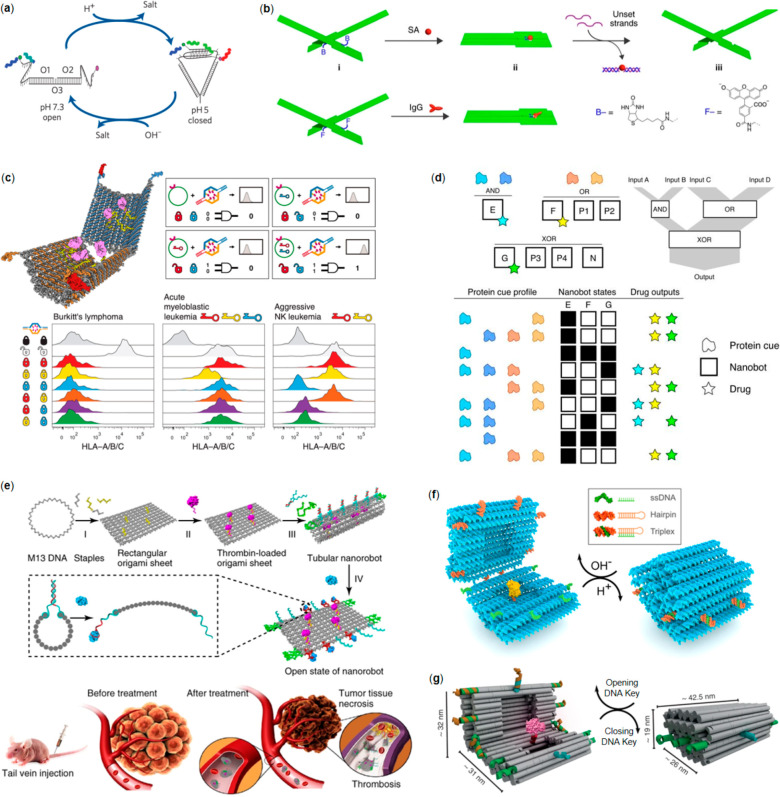Figure 3.
DNA nanorobotics for biomedicine. (a) An i-tetraplex for pH-mapping.86 (b) A nanomechanical DNA origami plier for detecting target molecules (observed through the plier configuration change).94 (c) A logic-gated DNA nanorobot for encapsulation and display of cargo. Top left panel: the open robot with loaded antibodies. Top right panel: Boolean AND gating with two-lock (two aptamer locks for robot) and two-key (antigens at the cell surface) combinations. Bottom panel: Logic-gating in action; different lock-key combinations against selected cancer cells.40 (d) Universal computing with DNA nanorobots; a generalized version of the robots shown in (c) with multiple different gate options. The logic-gated DNA nanorobots can adopt distinct states, and depending on the interaction with the protein cue profile, the interaction can result in different drug output.101 (e) Top panel: Working principle of the thrombin-loaded DNA nanorobot that is wrapped into a tubular shape using strands with nucleolin aptamers (robot interaction with nucleolin opens the robot and displays the cargo). Bottom panel: In vivo mouse model for inhibition of tumor growth and tumor necrosis.103 (f) A reconfigurable DNA origami nanocapsule with “pH-latches” for encapsulation and display of cargo. The capsule can reversibly open (dsDNA and ssDNA do not form a triplex) and close (dsDNA and ssDNA form a triplex) upon the pH change.107 (g) A similar device as in (f), but this type of DNA origami nanovault closes and opens through strand displacement reactions (DNA keys).108 (a) Reprinted with permission from ref (86). Copyright 2009 Springer Nature Ltd. (b) Reprinted with permission from ref (94). Copyright 2011 Springer Nature Ltd. (c) Reprinted with permission from ref (40). Copyright 2012 The American Association for the Advancement of Science. (d) Reprinted with permission from ref (101). Copyright 2014 Springer Nature Ltd. (e) Reprinted with permission from ref (103). Copyright 2018 Springer Nature Ltd. (f) Reprinted with permission from ref (107). Copyright 2019 American Chemical Society. Further permissions related to the material excerpted should be directed to the American Chemical Society. (g) Reprinted with permission from ref (108). Published by 2017 Springer Nature Ltd.

